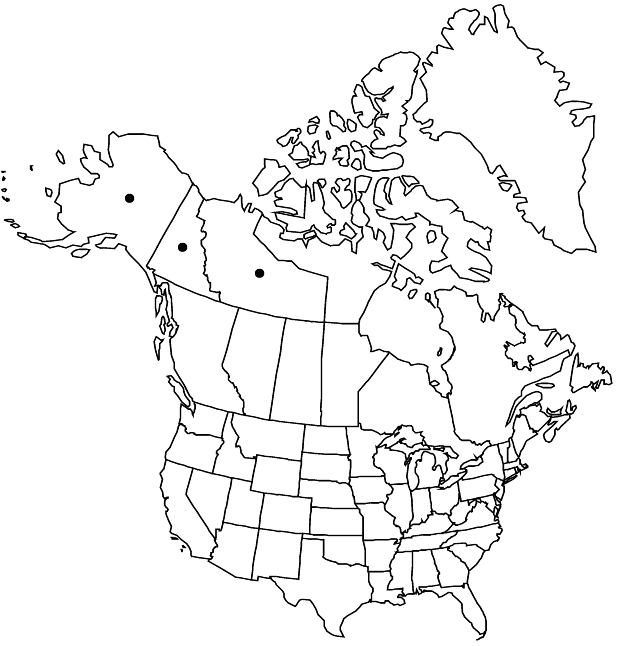Difference between revisions of "Douglasia ochotensis"
Ark. Bot., n. s. 7: 103. 1968 ,.
FNA>Volume Importer |
FNA>Volume Importer |
(No difference)
| |
Revision as of 23:03, 16 December 2019
Plants loosely cespitose cushions or mats with branched caudex. Stems prostrate, densely covered with marcescent, imbricate, reddish brown leaves proximally and terminal, green leaf rosettes. Leaves prominently recurved, thin; blade linear to lanceolate, 3–10 × 1–1.5 mm, margins entire, apex obtuse, hairy, hairs simple, surfaces glabrate to hairy, hairs simple. Scapes 5–10 mm, elongating little in fruit, glabrous or minutely glandular and hairy, hairs simple and forked. Inflorescences 1-flowered, ebracteate or, sometimes, bracteate; bract 1, linear-lanceolate, 0.5–1 × 0.5 mm, glabrous. Pedicels absent. Flowers: calyx 3–7 × 3–5 mm, glabrous; corolla pink, limb 4–12 mm diam., lobes 1–3 × 1–2 mm, margins entire. 2n = 38, 40.
Phenology: Flowering early summer.
Habitat: Rocky places on tundra, scree slopes
Elevation: 0-700 m
Distribution

N.W.T., Yukon, Alaska, e Asia (Russian Far East).
Discussion
Douglasia ochotensis is the only North American member of the genus to occur also in Asia; its range extends from the Sea of Okhotsk throughout the Bering Strait region, and across the Brooks Range to the Mackenzie River. It varies considerably with respect to flower size and degree of looseness in the growth habit; these characters are strongly affected by exposure, substrate stability, and moisture availability. Douglasia ochotensis can be easily distinguished from all other members of the genus by its prominent, imbricate, recurving, reddish brown, marcescent leaves.
Selected References
None.